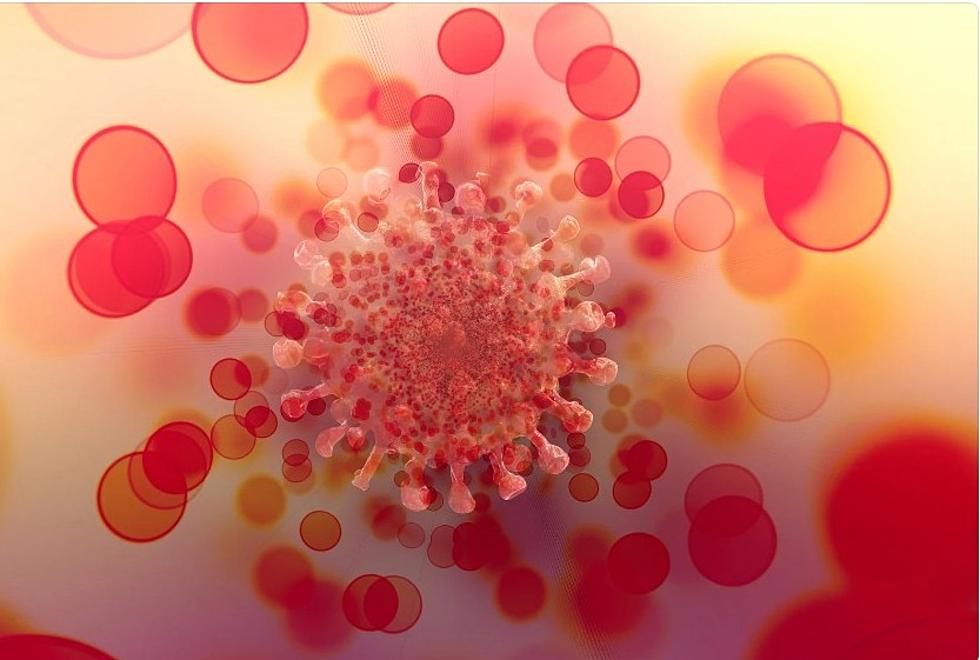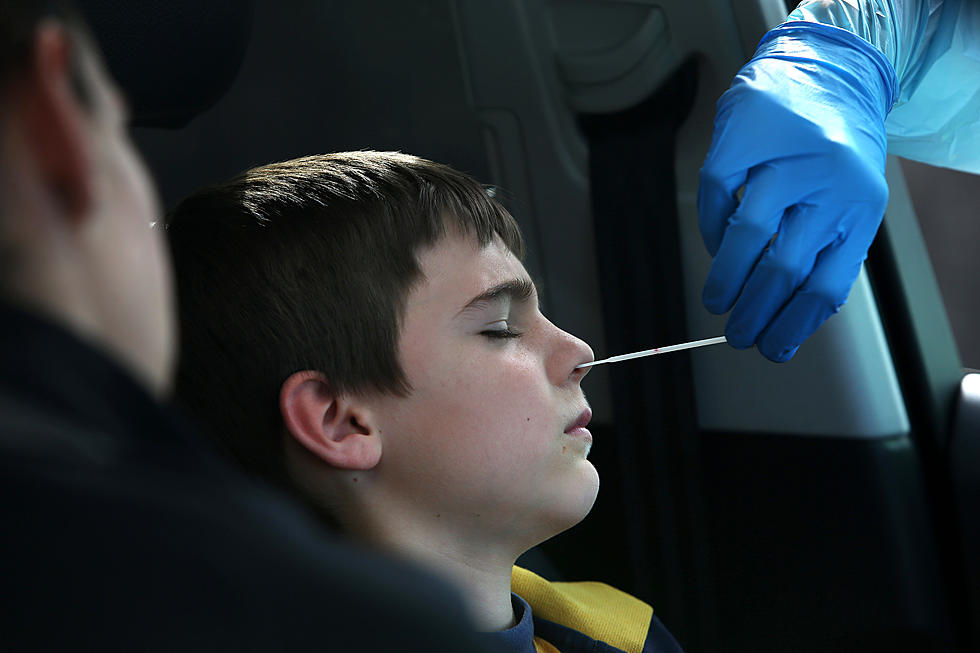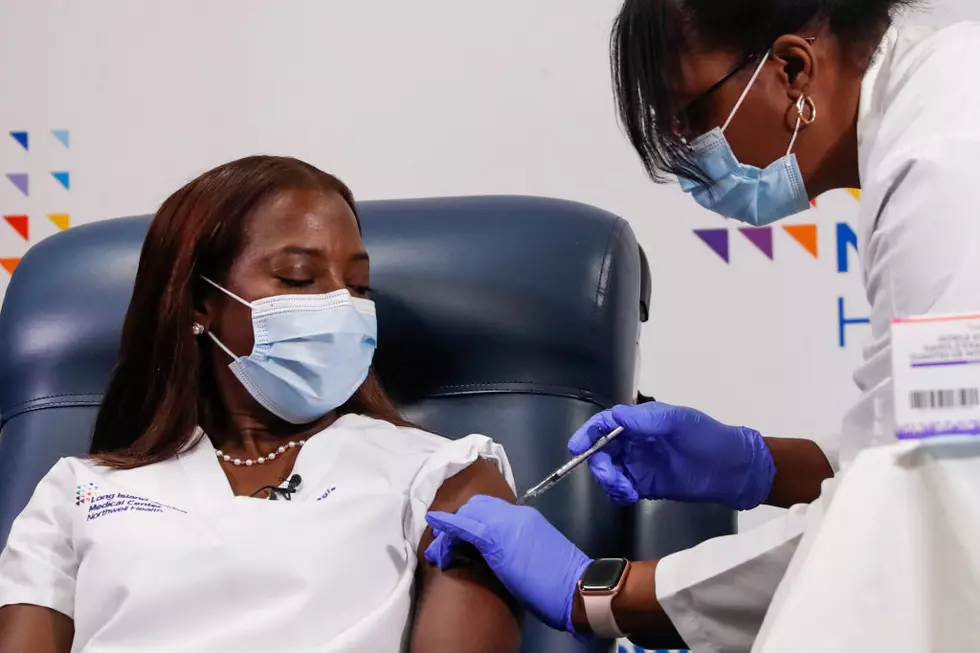
New Rules New Yorkers Must Follow For Indoor Entertainment, Arts
New York officials released a number of new guidelines you must follow during indoor entertainment.

Enter your number to get our free mobile app
Low-risk outdoor arts and entertainment include indoor museums, historical sites, aquariums, and other related institutions or activities that have been permitted to reopen.
Below is new COVID-19 guidelines issued by the state for what's considered "Low-Risk Indoor Arts & Entertainment"
Physical Distancing
- Limit the workforce and patron/visitor presence to no more than 25% of maximum occupancy, inclusive of patrons/visitors, who must only be permitted entry into the institution if they wear an acceptable face covering, provided that they are over the age of 2 and medically able to tolerate one.
- Ensure a distance of at least 6 ft. is maintained among individuals (both patrons/visitors and employees) at all times, with the exception of groups visiting the institution from the same household, unless safety or the core activity requires a shorter distance, in which case individuals must wear acceptable face coverings.
- Ensure that employees wear face coverings any time they interact with patrons/visitors (e.g. ticket sales), and that all individuals, including employees and patrons/visitors, wear face coverings any time they’re within 6 ft. of another person.
- For exhibits in a small area, calculate and enforce maximum occupancy limits and social distancing.
- Monitor/control flow of traffic into and within the institution to adhere to capacity requirements, and enhance employee/security presence to enforce limitations on gathering size, as necessary
- . Only permit group tours for members of the same household or party and with a maximum capacity under social gathering requirements at the time, including employees and patrons/visitors.
- Close high-risk interactive exhibits (e.g. those requiring patrons/visitors to touch or wear objects).
- Close children’s play areas or exhibits with play equipment, unless such areas/exhibits can be cleaned, disinfected, and sanitized between each child using the area/equipment who is not a member of the same household or party.
- Move any picnic areas and benches 6 ft. apart or close them if they can’t be moved.
- Operate in accordance with industry-specific DOH guidelines where appropriate.
Protective Equipment
- Ensure patrons/visitors are only permitted entry into the institution if they wear an acceptable face covering; provided they are over age 2 and able to medically tolerate one.
- Ensure patrons/visitors wear face coverings whenever they are in common areas or scenarios where it may be difficult to maintain 6 ft. of distance (e.g. entering/ leaving the facility, traversing an enclosed small exhibit, interacting with employees) and whenever they are within 6 ft. of individuals who are not members of their household or party.
- Ensure that any time employees come within six feet of another person, acceptable face coverings are worn. Employees must be prepared to don a face covering if another person unexpectedly comes within 6 ft. Employees also must wear face coverings any time they interact with patrons/visitors.
- Provide employees with an acceptable face covering at no-cost to the employee and have an adequate supply of coverings in case of need for replacement.
- Acceptable face coverings include but are not limited to cloth (e.g. homemade sewn, quick cut, bandana), surgical masks, and face shields. Clean, replace, and prohibit sharing of face coverings. Consult CDC guidance for information on PPE, as well as instructions on use and cleaning.
- Train employees on how to put on, take off, clean (as applicable), and discard PPE.
- Limit the sharing of objects among employees, as well as the touching of shared surfaces; or, require employees to wear gloves (trade-appropriate or medical) when in contact with shared objects or frequently touched surfaces; or, require employees to perform hand hygiene before and after contact.
Hygiene, Cleaning, and Disinfection
- Adhere to hygiene, cleaning, and disinfection requirements from the Centers for Disease Control and Prevention (CDC) and Department of Health (DOH) and maintain logs on site that document date, time, and scope of cleaning and disinfection.
- Provide and maintain hand hygiene stations on site, including handwashing with soap, running warm water, and disposable paper towels, as well as an alcoholbased hand sanitizer containing 60% or more alcohol for areas where handwashing is not available/practical.
- Make hand sanitizer available throughout common areas in the building (e.g. near exhibits). Provide appropriate cleaning/disinfection supplies for shared and frequently-touched surfaces (e.g. door handles, ticket counters) and encourages employees to use them before/after use of such surfaces, followed by hand hygiene.
- Conduct regular cleaning and disinfection of the building and more frequent cleaning and disinfection for high-risk areas used by many individuals and for frequently touched areas. Use Department of Environmental Conservation (DEC) products identified by the Environmental Protection Agency (EPA) as effective against COVID-19.
- Discontinue headsets/equipment loaned/rented to patrons/visitors unless they can be properly disinfected after each use.
- If single-use items (e.g. maps) are not provided, ensure they are cleaned and disinfected after each use.
- Provide for cleaning and disinfection of exposed areas in the event an individual is confirmed to have COVID19, with such cleaning and disinfection to include, at a minimum, all heavy transit areas and high-touch surfaces (e.g. badge scanners, restrooms, handrails, door handles, vending machines, communal coffee stations). Follow CDC guidelines on cleaning your facility after a suspected or confirmed case.
Communication
- Affirm you have reviewed and understand the state-issued industry guidelines, and that you will implement them.
- Post signage throughout the location to remind personnel and patrons/visitors to adhere to proper hygiene, social distancing rules, appropriate use of PPE, and cleaning and disinfection protocols.
- Conspicuously post completed safety plans on site
Screening
- Implement mandatory daily health screenings for employees and, where practicable, contractors and vendors (but do not mandate for patrons/visitors or delivery personnel), including an assessment (e.g. questionnaire, temperature check) asking about (1) COVID-19 symptoms in past 14 days, (2) positive COVID19 test in past 14 days, and/or (3) close or proximate contact with confirmed or suspected COVID-19 case in past 14 days. Responses must be reviewed and documented daily.
- Immediately notify the state and local health department upon being informed of any positive COVID-19 test results.
- Designate a site safety monitor whose responsibilities include continuous compliance with all aspects of the site safety plan.
Famous Hudson Valley High School Graduates
More From Hudson Valley Post









